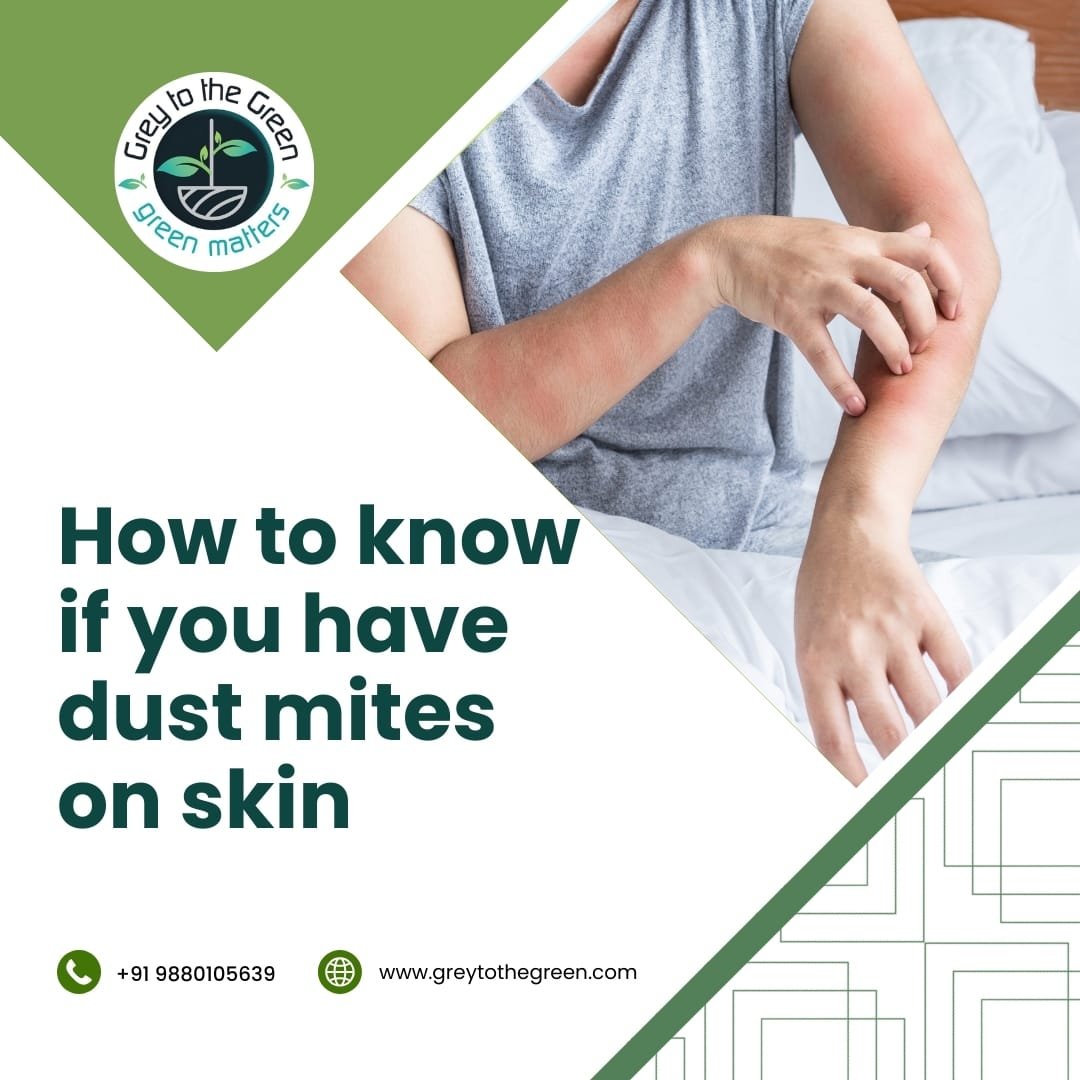What is Dust Mite Allergy?
How Dust Mites Affect Your Skin
- Red, inflamed patches
- Persistent itchy skin
- Small bumps that resemble insect bites (dust mites bites)
- Dust mite skin rash that appears in clusters
Signs You Might Have Dust Mites on Skin
1. Persistent Itchy Skin
2. Dust Mites Rash
3. Hives from Dust Mites
4. Worsening Dust Mite Allergy Symptoms
5. Recurring Skin Irritations
Why Skin Symptoms Shouldn’t Be Ignored
How to Confirm If It’s Dust Mites on Skin
- Allergy testing from a medical professional
- Observing symptom patterns (worse at night or in dust-prone areas)
- Checking bedding and furniture with special dust mite detection kits
- Dust mite skin rash that appears in clusters
Dust Mites Rash Treatment Options
- Use anti-itch creams or natural aloe vera for itchy skin
- Apply cool compresses to reduce inflammation
- Over-the-counter antihistamines may help reduce allergic reactions
- Wash bedding in hot water weekly
- Use dust-mite-proof mattress and pillow covers
- Vacuum regularly with a HEPA filter
- Spray CheckMite Dust Mite Allergy Spray on mattresses, pillows, carpets, and furniture to kill dust mites naturally
Why CheckMite is the Best Solution
Unlike synthetic sprays, CheckMite is made from plant-based ingredients and is safe for children and pets.
- Non-Toxic & Safe for Kids & Pets – Perfect for family use
- Proven Dust Mite Control – Scientifically backed results
- Multi-Surface Use – Works on bedding, carpets, furniture, and curtains
- Helps Prevent Dust Mite Skin Rash Recurrence – Reduces allergen buildup
Preventing Dust Mites on Skin
Once you’ve addressed the immediate issue, follow these tips to prevent dust mites on skin problems in the future:
- Maintain low humidity levels in your home
- Wash soft furnishings regularly
- Keep pets off beds and upholstered furniture
- Use air purifiers to trap airborne allergens
- Spray CheckMite weekly for ongoing protection
When to See a Doctor
If your dust mites rash is severe, you’re experiencing hives from dust mites, or your dust mite allergy symptoms are interfering with daily life, seek medical advice. Persistent itchy skin and rash could also be caused by other conditions, so getting a professional diagnosis is important.
Final Thoughts
Identifying dust mites on skin isn’t always straightforward, but understanding the symptoms — from dust mites rash to hives from dust mites — can help you take action quickly.
By combining proper dust mites rash treatment with preventive measures like CheckMite Dust Mite Allergy Spray, you can protect your family from ongoing skin irritation, improve indoor air quality, and enjoy a healthier, allergen-free home.
Take control of your skin health today. Say goodbye to itchy skin and sleepless nights — and hello to comfort, relief, and a dust-mite-free home with CheckMite by Grey to the Green.
Frequently Asked Questions (FAQs)
How do I know if I have dust mites on my skin?
If you experience persistent itchy skin, dust mite rash, or hives that worsen at night or on upholstered furniture, you may have dust mites on skin.
What does a dust mite rash look like?
A dust mite rash often appears as small, red bumps or blotchy patches, typically on arms, legs, neck, or face after contact with infested fabrics.
Can dust mites cause hives?
Yes. Hives from dust mites are raised, itchy welts caused by an allergic reaction to proteins in dust mite droppings, often lasting hours to days.
Are dust mite bites on skin real?
Dust mites don’t actually bite, but their waste proteins can trigger skin irritation that feels like dust mite bites on skin.
How can I treat dust mites rash at home?
Wash bedding in hot water, use anti-itch creams, vacuum with a HEPA filter, and apply a dust mite spray like CheckMite to eliminate allergens.
Can dust mite allergy symptoms affect skin and breathing?
Yes. Dust mite allergy symptoms may include itchy skin, rash, nasal congestion, watery eyes, coughing, and asthma flare-ups.
How do I prevent dust mites on skin in the future?
Maintain low humidity, wash bedding weekly, use dust-mite-proof covers, and spray dust mite treatments regularly to prevent recurrence.



